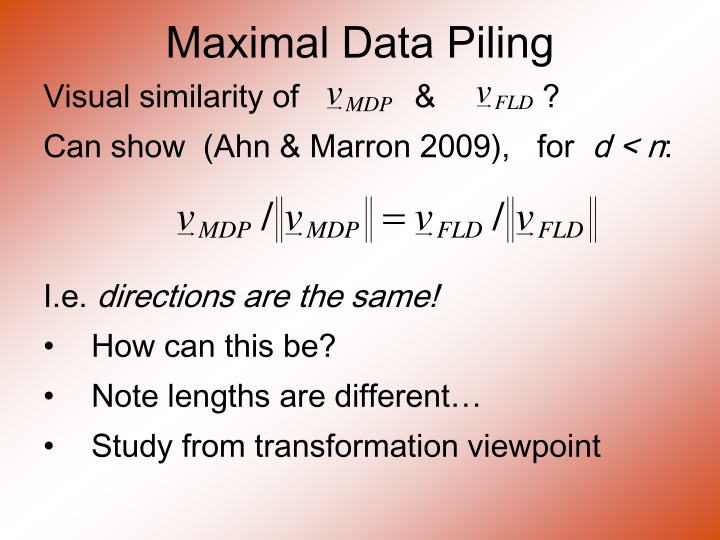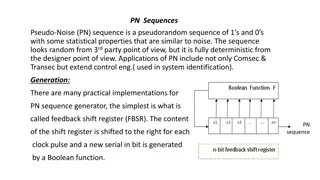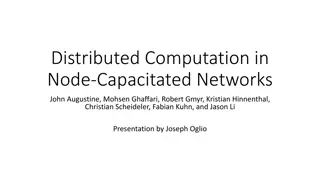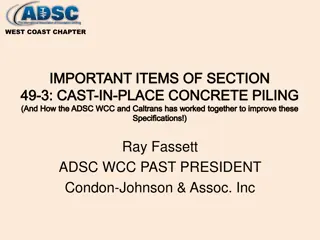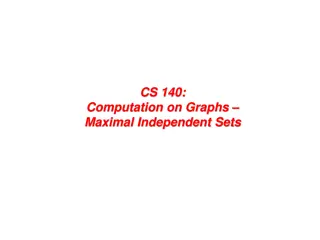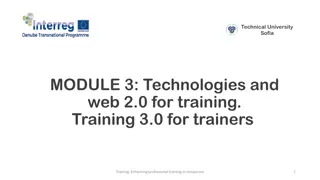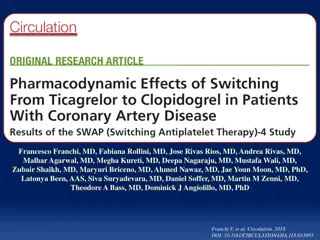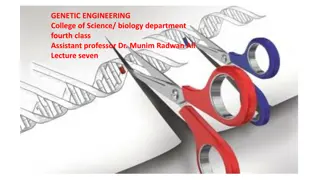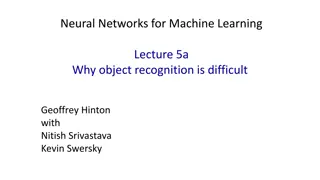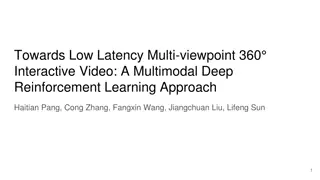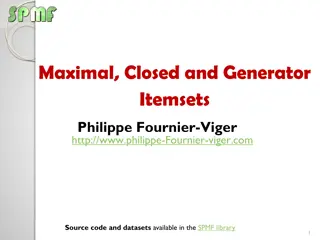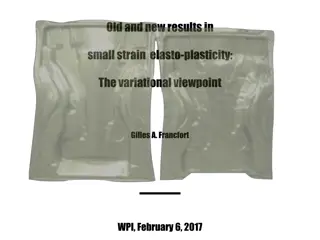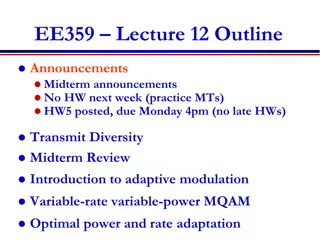Maximal Data Piling: Insights into Piling Data using Transformation Viewpoint
The study explores the concept of maximal data piling (MDP) and its visual similarities, showing how for d < n, directions can produce similar results. Through images and explanations, the transformation viewpoint sheds light on why FLD and MDP are identical in certain scenarios. The visual representations present the details of data piling, recalling transformations, and the significance of finding optimal directions for clustering natural clusters. The terminology surrounding MDP, its relevance for classification, and insights into the HDLSS space are also discussed.
Download Presentation

Please find below an Image/Link to download the presentation.
The content on the website is provided AS IS for your information and personal use only. It may not be sold, licensed, or shared on other websites without obtaining consent from the author.If you encounter any issues during the download, it is possible that the publisher has removed the file from their server.
You are allowed to download the files provided on this website for personal or commercial use, subject to the condition that they are used lawfully. All files are the property of their respective owners.
The content on the website is provided AS IS for your information and personal use only. It may not be sold, licensed, or shared on other websites without obtaining consent from the author.
E N D
Presentation Transcript
Maximal Data Piling Visual similarity of & ? Can show (Ahn & Marron 2009), for d < n: v v FLD MDP = / / v v v v MDP MDP FLD FLD I.e. directions are the same! How can this be? Note lengths are different Study from transformation viewpoint
Maximal Data Piling Recall Transfo view of FLD:
Maximal Data Piling Include Corres- ponding MDP Transfo : Both give Same Result!
Maximal Data Piling Details: FLD, sep ing plane normal vector Within Class, PC1 PC2 Global, PC1 PC2
Maximal Data Piling Acknowledgement: This viewpoint I.e. insight into why FLD = MDP (for low dim al data) Suggested by Daniel Pe a
Maximal Data Piling Fun e.g: rotate from PCA to MDP dir ns
Maximal Data Piling MDP for other class labellings: Always exists Separation bigger for natural clusters Could be used for clustering Consider all directions Find one that makes largest gap Very hard optimization problem Over 2n-2possible directions
Maximal Data Piling A point of terminology (Ahn & Marron 2009): MDP is maximal in 2 senses: 1. # of data piled 2. Size of gap (within subspace gen d by data)
Maximal Data Piling Recurring, over-arching, issue: HDLSS space is a weird place
Maximal Data Piling Usefulness for Classification? First Glance: Terrible, not generalizable HDLSS View: Maybe OK? Simulation Result: Good Performance for Autocorrelated Errors Reason: not known
Kernel Embedding Aizerman, Braverman and Rozoner (1964) Motivating idea: Extend scope of linear discrimination, By adding nonlinear components to data (embedding in a higher dim al space) Better use of name: nonlinear discrimination?
Kernel Embedding Toy Examples: In 1d, linear separation splits the domain into only 2 parts x x:
Kernel Embedding But in the quadratic embedded domain , ( , x x x ) 2: 2 linear separation can give 3 parts
Kernel Embedding But in the quadratic embedded domain ( ) , x x x 2: 2 Linear separation can give 3 parts original data space lies in 1d manifold very sparse region of curvature of manifold gives: better linear separation can have any 2 break points (2 points line) 2
Kernel Embedding Stronger effects for higher order polynomial embedding: E.g. for cubic, ) , , x x x ( 2 3 3 : x linear separation can give 4 parts (or fewer)
Kernel Embedding Stronger effects - high. ord. poly. embedding: original space lies in 1-d manifold, even sparser in higher d curvature gives: improved linear separation can have any 3 break points (3 points plane)? Note: relatively few interesting separating planes 3
Kernel Embedding General View: for original data matrix: x x 11 1 n x x add rows: 1 d dn x x 11 1 n x x i.e. embed in Higher Dimensional space 1 d 2 11 dn 2 1 x x n 2 2 x x 1 d x dn x x x 11 21 1 2 n n
Kernel Embedding Embedded Fisher Linear Discrimination: Choose Class 1, for any when: ( 2 0 ( X d x ) ( ) ) 1 t 1 1 ) 1 ( ) 2 ( ) 1 ( ) 2 ( ) 1 ( ) 2 ( 0 + w w x X X X X X in embedded space. Image of class boundaries in original space is nonlinear Allows more complicated class regions Can also do Gaussian Lik. Rat. (or others) Compute image by classifying points from original space
Kernel Embedding Visualization for Toy Examples: Have Linear Disc. In Embedded Space Study Effect in Original Data Space Via Implied Nonlinear Regions Approach: Use Test Set in Original Space (dense equally spaced grid) Apply embedded discrimination Rule Color Using the Result
Kernel Embedding Polynomial Embedding, Toy Example 1: Parallel Clouds
Kernel Embedding Polynomial Embedding, Toy Example 1: Parallel Clouds PC1 Original Data
Kernel Embedding Polynomial Embedding, Toy Example 1: Parallel Clouds PC1
Kernel Embedding Polynomial Embedding, Toy Example 1: Parallel Clouds PC1
Kernel Embedding Polynomial Embedding, Toy Example 1: Parallel Clouds PC1
Kernel Embedding Polynomial Embedding, Toy Example 1: Parallel Clouds PC1
Kernel Embedding Polynomial Embedding, Toy Example 1: Parallel Clouds PC1 Note: Embedding Always Bad Don t Want Greatest Variation
Kernel Embedding Polynomial Embedding, Toy Example 1: Parallel Clouds FLD Original Data
Kernel Embedding Polynomial Embedding, Toy Example 1: Parallel Clouds FLD
Kernel Embedding Polynomial Embedding, Toy Example 1: Parallel Clouds FLD
Kernel Embedding Polynomial Embedding, Toy Example 1: Parallel Clouds FLD
Kernel Embedding Polynomial Embedding, Toy Example 1: Parallel Clouds FLD All Stable & Very Good
Kernel Embedding Polynomial Embedding, Toy Example 1: Parallel Clouds GLR Original Data
Kernel Embedding Polynomial Embedding, Toy Example 1: Parallel Clouds GLR
Kernel Embedding Polynomial Embedding, Toy Example 1: Parallel Clouds GLR
Kernel Embedding Polynomial Embedding, Toy Example 1: Parallel Clouds GLR
Kernel Embedding Polynomial Embedding, Toy Example 1: Parallel Clouds GLR
Kernel Embedding Polynomial Embedding, Toy Example 1: Parallel Clouds GLR Unstable Subject to Overfitting
